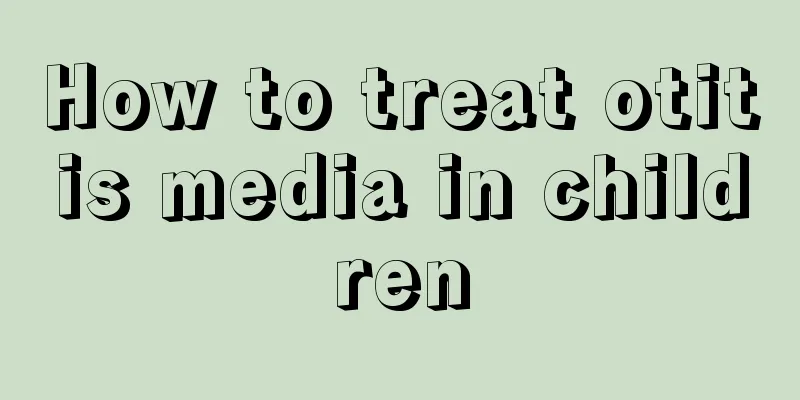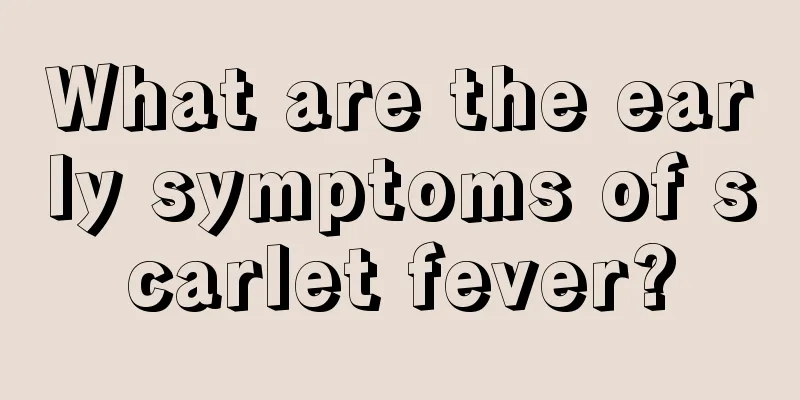How to treat otitis media in children

|
Otitis media in children is a common disease among children. Different diseases have their own unique symptoms, which is why we need to distinguish them. Different diseases mean that their symptoms and treatment methods will also be different. Only by clearly understanding the causes of these diseases and their symptoms can we treat them. No matter what kind of disease it is, it needs timely treatment. Knowing the cause of the disease clearly not only makes it easier to treat it in a timely manner, but also allows us to develop some preventive methods based on the cause. Children's resistance is relatively weak, which is one of the reasons why they are more likely to suffer from diseases. So what should we do if children have otitis media? Otitis media in children is caused by bacterial infection in the middle ear, so the full medical name is acute suppurative otitis media. When children suffer from otitis media, the main symptoms are tinnitus, ear pain, hearing loss and pus in the ear canal, which is extremely detrimental to their growth and development. In order for parents to detect the disease as early as possible and treat it in time, let us now look at the symptoms of otitis media in children. Otitis media in children (1) Early stage: Children may show symptoms such as lack of energy, loss of appetite, tinnitus, and ear discomfort (children cannot express themselves), but ear discomfort will affect the baby's play and sleep. During this period, doctors may find that the eardrum (medically called tympanic membrane) is sunken and there is fluid in the middle ear. (2) Progressive stage: Symptoms include high fever, with body temperature reaching 39°C to 40°C, crying and restlessness, hearing loss and ear pain, as well as gastrointestinal symptoms such as nausea, vomiting and diarrhea. These symptoms are similar to those of a cold or enteritis and are easily ignored or misdiagnosed. After examination, it can be found that the eardrum is congested and the auditory ossicles are red, swollen and bulging. (3) Peak period: Children have high fever and refuse to eat. In severe cases, they may have a gray complexion, fluctuating tinnitus, hearing loss, and ear pain radiating to the surrounding areas. Examination may reveal a bulging eardrum and pus in the middle ear. (4) Late stage: Generally, 4-5 days after the onset of the disease, the child's body temperature drops, the ear pain disappears, and the child can fall asleep, but the eardrum ruptures, pus flows out of the ear canal, and tinnitus and hearing loss still exist. How to treat otitis media in children? For children with otitis media, drug treatment is the preferred method. Surgery is too traumatic and is therefore rarely used. Drug therapy is simple and convenient and does not interfere with study and work. Therefore, many parents will use drug therapy for their children. The drug mainly treats by antibacterial, pus drainage and swelling reduction to achieve the purpose of reducing the perforation. "Liuwei Tongqiaoling" is effective in treating otitis media. It combines external and internal application for treatment, with good results. The above introduces how to treat otitis media in children. Only by discovering the disease in time can they be treated and recover faster. Otitis media in children is a bacterial infection. Generally, children need to pay extra attention to their diet and lifestyle because their immunity is relatively weak. Only by mastering the correct treatment method can the disease be cured.
|
<<: Is it okay for babies to use pacifiers?
>>: The dangers of picky eating
Recommend
Symptoms of shrimp allergy in babies
Since babies have weak resistance, even a small c...
What to do if a four-month-old baby has indigestion after eating milk powder
Newly born babies usually drink breast milk, beca...
At what age is it better to check the trace elements of the baby?
As the baby grows day by day, the nutrition of br...
Why do children vomit at night?
When feeding children, parents must take into con...
How to perform massage for children’s cough? Introducing professional methods to you
When a child has a cough, massage treatment can b...
Mild brain injury in newborns
Brain damage in newborns can cause great harm, an...
How to deal with a child's continuous fever
I believe that many children will have symptoms o...
What to do if children's immunoglobulin A is low
Many children often get infected with many diseas...
How to develop children's memory?
We all know that parents can be said to be the be...
What to do if your child has a repeated fever of 40 degrees
Sometimes babies have a fever in the middle of th...
What to do if your one-year-old baby is short
Many parents always feel that their one-year-old ...
What to do if your child steals?
Children do not have the ability to distinguish r...
What causes patent ductus arteriosus in premature infants?
Many premature babies will have patent ductus art...
The child swallowed the mercury in the thermometer
It is not common in daily life for a child to swa...
What do children know about diet?
Children cannot make random choices in their diet...









